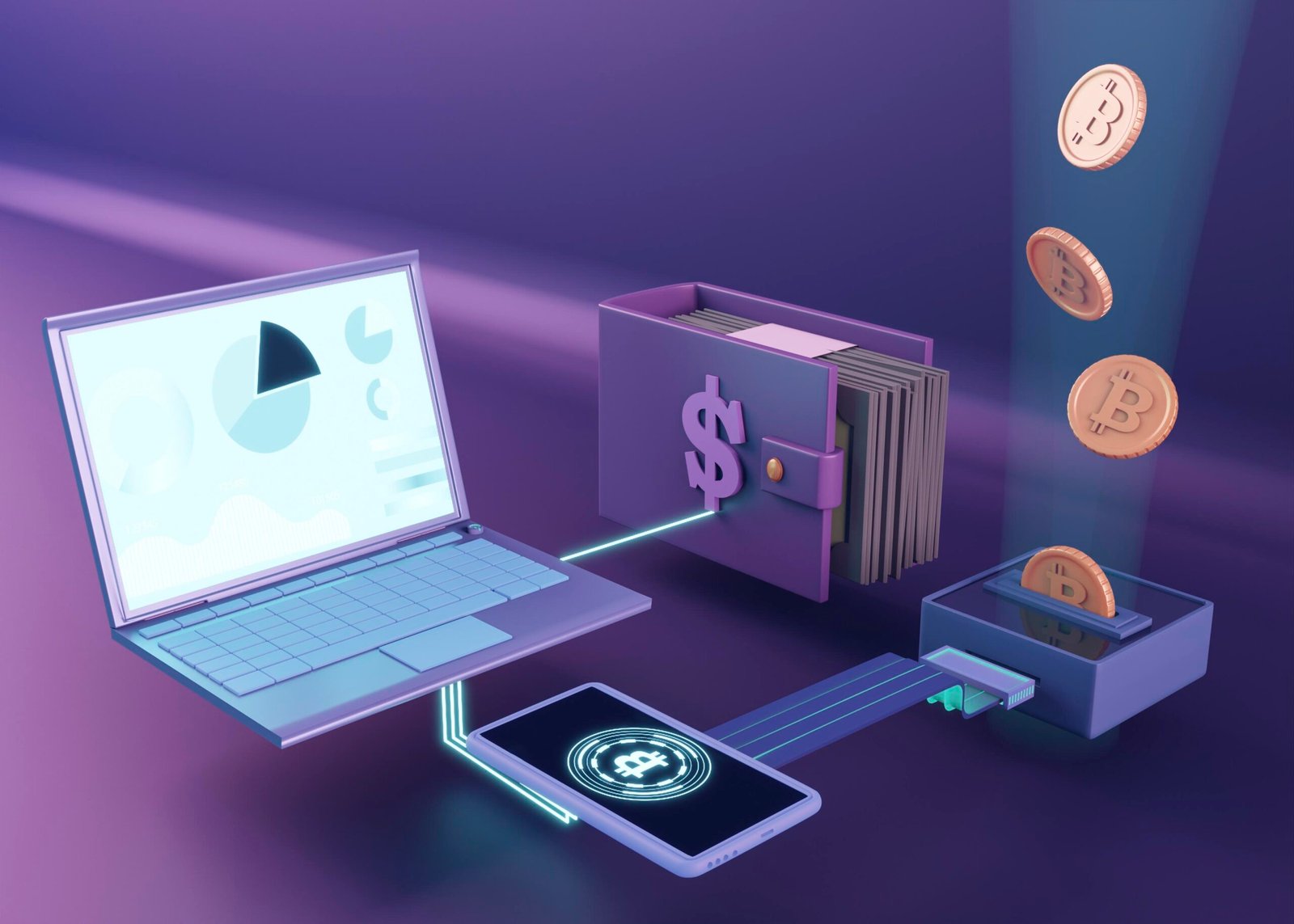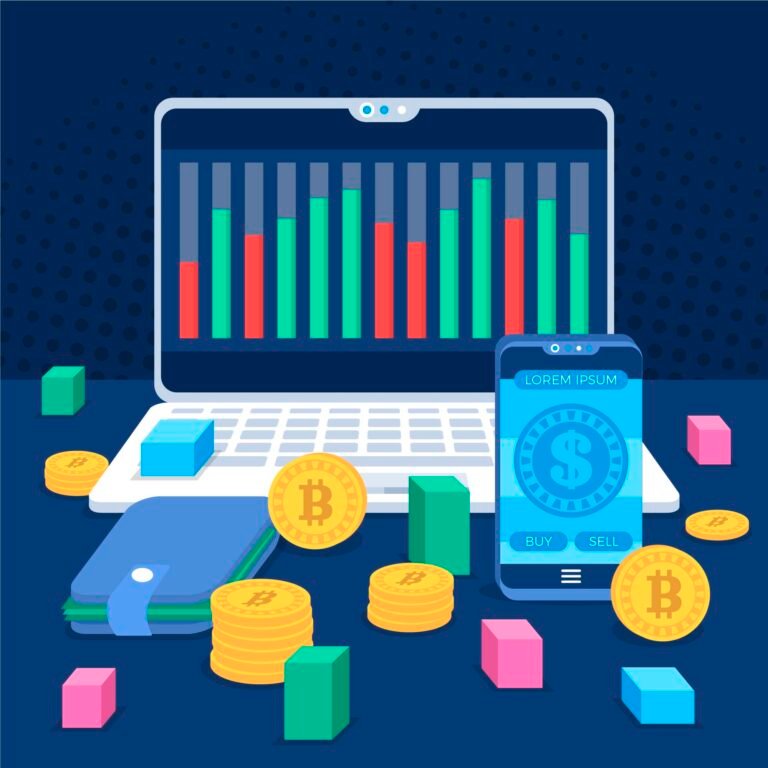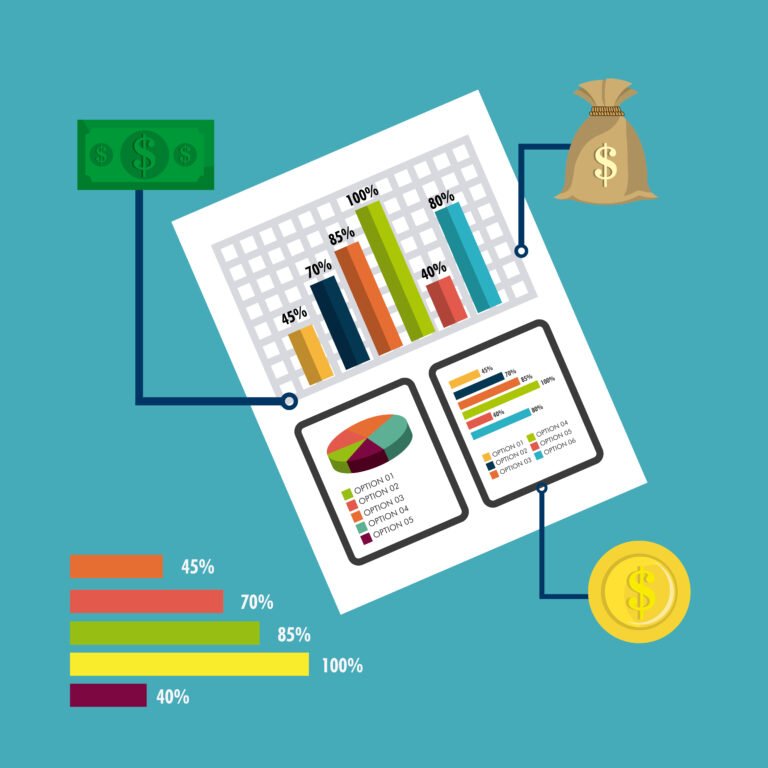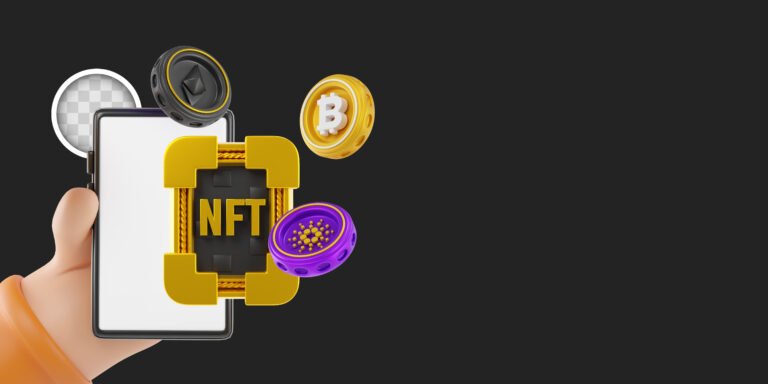15 Beginner-Friendly Crypto Guides to Read in 2025
What Is Cryptocurrency and How Does It Work?
Crypto Guides: Cryptocurrency is a form of digital money that uses cryptography to secure transactions, control the creation of new units, and verify the transfer of assets. Unlike traditional currencies issued by governments (like USD or EUR), cryptocurrencies operate on decentralized networks based on blockchain technology.
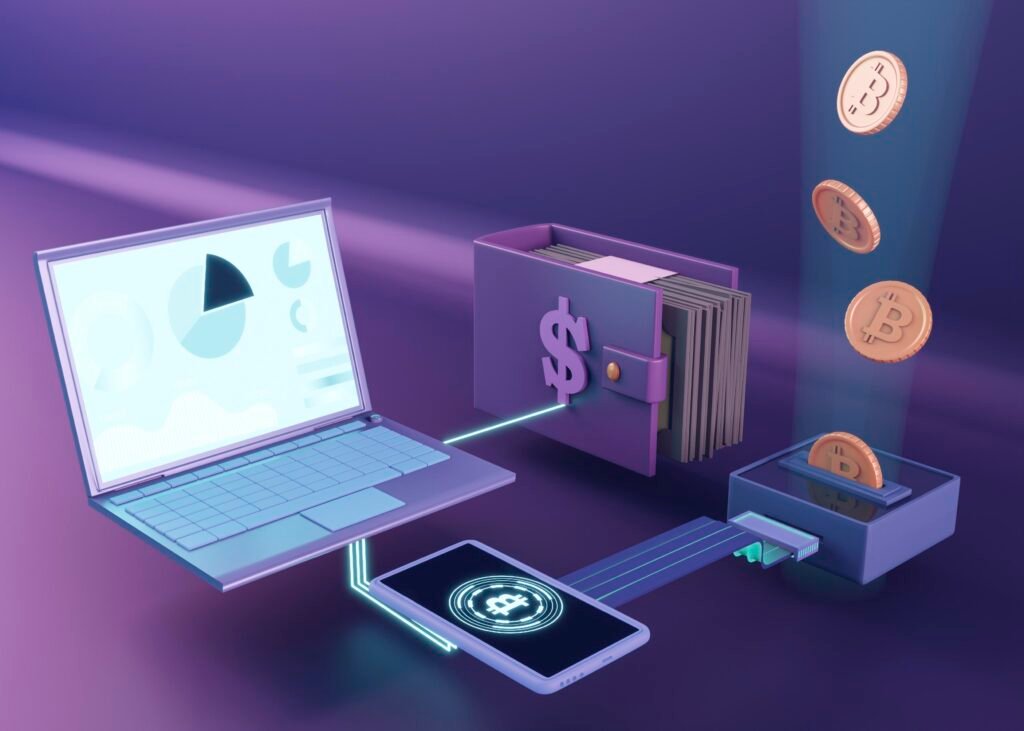
Table of Contents
The Basics of Blockchain Technology
At the heart of cryptocurrency is blockchain—a public, distributed ledger that records all transactions across a network. Each block contains a group of transactions, and these blocks are chained together in chronological order, making it nearly impossible to alter past data without changing every subsequent block.
This decentralized nature removes the need for banks or intermediaries. Instead, transactions are verified by a network of participants (called nodes) using consensus mechanisms like Proof of Work (PoW) or Proof of Stake (PoS).
Coins vs. Tokens Explained
Not all cryptocurrencies are the same. Here’s the difference:
- Coins are native to their own blockchains. For example, Bitcoin runs on the Bitcoin blockchain, and Ethereum on the Ethereum blockchain. These are typically used as digital money.
- Tokens, on the other hand, are built on existing blockchains (like Ethereum or Solana). They’re created using smart contracts and can represent anything—access rights, digital art (NFTs), or even real-world assets. Popular examples include USDT (Tether) and UNI (Uniswap).
Understanding this difference helps you navigate the crypto space more confidently—whether you’re investing, trading, or using dApps.
How to Buy Your First Crypto in 2025
Getting started with crypto may seem overwhelming, but the process is simpler than ever in 2025. Whether you’re buying Bitcoin, Ethereum, or any altcoin, it all begins with choosing the right platform and securing your assets properly.
Choosing a Secure Exchange
To buy crypto, you need to sign up with a reputable cryptocurrency exchange. Look for platforms that are:
- Regulated in your country
- Known for strong security practices
- Easy to use for beginners
- Supporting local currency deposits
Popular exchanges in 2025 include Coinbase, Binance, Kraken, and regional platforms with good reputations. Always enable two-factor authentication (2FA) and avoid keeping large amounts of funds on an exchange long-term.
Setting Up Your First Wallet
Once you buy crypto, you’ll need a wallet to store it. A wallet is a digital tool that allows you to receive, send, and manage your cryptocurrency. There are many types of wallets, each offering different levels of security and convenience.
Hot vs. Cold Wallets: Where Should You Store Your Crypto?
The most important decision in crypto storage is whether to use a hot wallet or a cold wallet.
Pros and Cons of Each Type
- Hot Wallets (connected to the internet):
Pros: Easy to use, great for frequent transactions, often free
Cons: More vulnerable to hacks, phishing, and malware - Cold Wallets (offline storage):
Pros: Extremely secure, immune to online attacks
Cons: More expensive, slightly less convenient for beginners
Best Options for Beginners
- Hot Wallets:
Trust Wallet, MetaMask, or exchange wallets (for small amounts) - Cold Wallets:
Ledger Nano X, Trezor Model T – ideal if you’re planning to hold long-term
A smart approach for most beginners is to start with a hot wallet for small trades and explore cold storage once you’re more comfortable with crypto.
Understanding Bitcoin, Ethereum, and Altcoins
With thousands of cryptocurrencies on the market, it’s important to understand the major players and how they differ. Bitcoin and Ethereum dominate the space, but altcoins offer unique innovations and opportunities.
Key Differences and Use Cases
- Bitcoin (BTC):
Launched in 2009, Bitcoin is the first and most valuable cryptocurrency. Its main use case is as a decentralized digital store of value—often called “digital gold.” It’s slow but secure, with a capped supply of 21 million coins. - Ethereum (ETH):
Ethereum introduced smart contracts, allowing developers to build decentralized apps (dApps). It powers DeFi, NFTs, games, and tokenized assets. While also used as digital money, Ethereum is more focused on programmable finance. - Altcoins:
“Altcoins” refers to any crypto that isn’t Bitcoin. Some offer faster transactions (like Solana), better privacy (like Monero), or focus on specific niches like data storage (Filecoin) or AI (Fetch.ai). Each has different risks and rewards.
Why Bitcoin Still Leads the Market
Despite thousands of competitors, Bitcoin remains the most trusted and widely adopted crypto. It’s the first choice for institutions, the most secure network by hash rate, and often the first coin people buy. Many altcoins move in correlation with Bitcoin’s price, making it the bellwether for the entire crypto market.
How to Keep Your Crypto Safe from Scams
Crypto security is more important than ever. As adoption grows, so do the scams targeting new investors.
Common Threats in 2025
- Phishing Scams: Fake emails or DMs that trick you into revealing your private keys or login info
- Pump-and-Dump Schemes: Shady tokens hyped online to inflate price, then quickly dumped
- Fake Wallets & Apps: Malicious software that steals your crypto
- Rug Pulls: Developers abandon a project after collecting investor funds
- Impersonation: Scammers posing as support teams, influencers, or trusted figures
Security Tips for New Investors
- Always use 2FA on exchanges and wallets
- Never share your private key or seed phrase with anyone
- Use official links only (bookmark trusted sites)
- Store large amounts in a cold wallet
- Double-check token addresses before sending funds
- Be skeptical of offers that sound “guaranteed” or “risk-free”
The golden rule: if something feels off or too good to be true—it probably is.
Crypto Terms Every Beginner Should Know
The crypto world has its own language. If you’re new, understanding common terms can save you from confusion—and scams. Here are some must-know phrases to get you started.
From HODL to Rug Pull
- HODL: A misspelling of “hold” that became slang for keeping your crypto long-term, no matter what the market does.
- FOMO: “Fear of Missing Out”—buying into a coin because it’s pumping.
- DYOR: “Do Your Own Research”—a reminder not to blindly trust hype.
- Rug Pull: A scam where a crypto project suddenly disappears with investors’ funds.
- Gas Fees: The cost of making transactions on blockchains like Ethereum.
- Whale: Someone who holds a large amount of a cryptocurrency.
- Altcoin: Any cryptocurrency that isn’t Bitcoin.
- DeFi: Decentralized Finance—crypto-based financial services without middlemen.
- Airdrop: Free tokens given to users, usually for promotion or loyalty.
- Private Key/Seed Phrase: A secret string of words that gives access to your wallet—never share it.
Simple Definitions for Complex Terms
When in doubt, use tools like CoinGecko Glossary or Crypto Twitter to look up unfamiliar terms. Understanding the lingo helps you stay informed and make smarter decisions.
How to Track and Manage Your Crypto Portfolio
Once you start buying different coins, it’s essential to track your holdings properly. Good portfolio management helps you spot growth opportunities and avoid overexposure to risky assets.
Free Tools to Monitor Your Holdings
- CoinGecko Portfolio: Track price movements and coin performance
- CoinMarketCap Portfolio: Simple, mobile-friendly interface
- Zerion: Great for DeFi users and wallet integration
- Debank: Ideal for tracking tokens across multiple chains
- Blockfolio (now FTX App): Still useful despite exchange issues—use for tracking only
Most tools let you add your trades manually or connect wallets for real-time updates.
Diversification Tips for New Traders
- Don’t put all your funds into one coin—even if it’s Bitcoin
- Balance large caps (like ETH or BNB) with smaller, high-risk coins
- Avoid jumping into hyped tokens without research
- Allocate a portion to stablecoins to reduce volatility
- Rebalance your portfolio every few weeks or after major market moves
Smart tracking and diversification help you survive the dips and maximize gains during bull runs.
Intro to Crypto Trading: Spot, Futures, and DCA
Crypto trading comes in many forms, and choosing the right one depends on your goals and risk tolerance. Before jumping in, it’s essential to understand the basics.
What Type of Trading Fits Your Risk Level
- Spot Trading:
The most beginner-friendly option. You buy crypto at the current market price and own it directly. Ideal for long-term holders and casual investors. - Futures Trading:
Advanced and risky. You speculate on future price movements—often with leverage. While profits can be high, so are losses. Beginners should proceed with extreme caution or avoid it entirely. - DCA (Dollar-Cost Averaging):
A safe and proven method where you invest a fixed amount regularly (e.g., weekly or monthly) regardless of price. This reduces the impact of market volatility and removes emotion from trading decisions.
Why Dollar-Cost Averaging Is Still Popular
Even in 2025, with faster tools and more advanced strategies, DCA remains a top choice for beginners. It’s simple, stress-free, and helps avoid the pressure of trying to “time the market.” Whether prices are up or down, you stay consistent—and often end up ahead over time.
Understanding Gas Fees, Network Congestion, and Transactions
Every blockchain comes with costs and delays, especially when the network is busy. Let’s break down how this works.
Why Ethereum Can Get Expensive
Ethereum transactions require “gas” to process. Gas fees fluctuate based on demand. When the network is congested (during NFT drops, bull runs, or popular token launches), gas fees can spike to tens or even hundreds of dollars.
This happens because Ethereum still relies on a decentralized validator system with limited processing capacity. Every transaction competes for block space—more demand means higher fees.
How Layer 2s Help in 2025
Layer 2 solutions like Arbitrum, Optimism, and Base now handle much of the Ethereum traffic. These are built on top of Ethereum and batch many transactions into one, reducing fees and speeding up processing.
Benefits of Layer 2s:
- Up to 100x lower gas fees
- Faster transactions
- Still backed by Ethereum’s security
For beginners, using Layer 2s is often the smarter and cheaper way to interact with dApps, trade, or transfer assets in 2025.
What Are Stablecoins and Why Are They Important?
Stablecoins are cryptocurrencies designed to maintain a stable value—usually pegged to a fiat currency like the US dollar. They combine the benefits of crypto (fast, global, decentralized) with the stability of traditional money.
Popular Stablecoins in Use
- USDT (Tether): The most widely used stablecoin, accepted on nearly every exchange.
- USDC (USD Coin): Known for greater transparency and compliance with regulators.
- DAI: A decentralized stablecoin backed by crypto collateral instead of fiat reserves.
- FDUSD, TUSD, and others: Newer entrants offering competitive features and fast settlement.
In 2025, stablecoins are not just trading tools—they’re essential infrastructure for DeFi, cross-border payments, and on-chain savings.
How to Use Them for Trading and Payments
- Trading: Use stablecoins to move in and out of crypto positions without converting to fiat. They protect your portfolio during market dips.
- Payments: Many merchants and freelancers now accept USDT or USDC directly. Faster than bank wires and cheaper for international transactions.
- Storing Value: Stablecoins can be held in wallets or used in DeFi to earn yield—often with lower risk than volatile coins.
Always verify the platform or protocol you’re using is secure before sending or storing large amounts of stablecoins.
Crypto Taxes and Regulations in 2025
As crypto adoption grows, so does government oversight. In 2025, taxes and regulations are more structured—but also more complex—depending on your country.
What You Need to Know Before Cashing Out
- Crypto is taxable. In most countries, converting crypto to fiat, using it to buy goods, or even trading between tokens can trigger a taxable event.
- Capital gains tax applies. Short-term trades usually incur higher taxes than long-term holds.
- Airdrops, staking, and mining rewards are also considered income in many regions.
- Record keeping is essential. You must know your buy price, sell price, and date of each transaction to calculate gains/losses accurately.
Check with your local tax authority or a crypto-savvy accountant to understand your obligations.
Tools That Help Track Your Activity
- CoinTracker: Integrates with exchanges and wallets to calculate taxes automatically.
- Koinly: Popular for tax reporting in multiple countries with detailed transaction breakdowns.
- Accointing: Offers real-time portfolio tracking and simplified tax reports.
- DeTax, ZenLedger, and TokenTax: Also solid options depending on where you live.
Automating your tracking early helps avoid year-end panic and ensures accurate reporting—especially if you’re actively trading or investing across multiple platforms.
NFTs for Beginners: More Than Just Art
NFTs (Non-Fungible Tokens) are unique digital assets stored on a blockchain. While most people associate NFTs with digital art and collectibles, their use cases have evolved significantly by 2025.
Real-World Uses Emerging in 2025
- Digital Identity: NFTs are being used to verify credentials, certifications, and memberships (e.g., proof of attendance or professional licenses).
- Gaming: In-game items, skins, and characters can be bought, sold, and owned as NFTs—often across multiple games.
- Music and Entertainment: Musicians use NFTs for exclusive album drops, ticketing, and royalty sharing with fans.
- Real Estate & Asset Ownership: Some platforms now tokenize property deeds, luxury assets, and even company shares using NFTs.
- Loyalty Programs: Brands issue NFTs to reward customers with discounts, perks, or early access to products.
NFTs go beyond collectibility—they’re powering new forms of ownership, commerce, and engagement.
Risks and Rewards of Digital Ownership
Rewards:
- You truly own your asset—no middleman can take it away.
- NFTs can increase in value if they become rare or highly demanded.
- They provide access to exclusive communities, content, or features.
Risks:
- Scams and rug pulls are still common in NFT launches.
- Some NFTs lose all value if the creator abandons the project.
- Smart contracts may have vulnerabilities, leading to loss of funds or access.
Always research the project, check the contract on-chain, and use trusted marketplaces like OpenSea, Blur, or Magic Eden.
How to Spot a Legit Crypto Project
With thousands of new tokens launching every year, learning how to evaluate a project can protect your portfolio from scams or hype-driven losses.
Red Flags to Avoid
- Anonymous teams with no track record or public presence
- Unverifiable tokenomics with unclear allocation or massive team/reserve wallets
- Overpromising websites with vague roadmaps and no product
- Aggressive marketing but no working product or code
- No smart contract audits or open-source code
If something feels rushed or too good to be true, trust your gut.
Evaluating Whitepapers and Teams
- Whitepaper quality: Look for clarity, technical detail, and a well-defined use case. A whitepaper should explain the problem, the solution, token utility, and roadmap.
- Team background: Research the founders and developers on LinkedIn, GitHub, and social media. Look for experience in blockchain, finance, or related fields.
- Community strength: Check for an active and organic community on Discord, Telegram, X (Twitter), and Reddit. Real users ask real questions.
- Roadmap and development progress: Are milestones being hit? Is the code actively updated on GitHub?
Getting Started with DeFi (Decentralized Finance)
DeFi stands for decentralized finance—an open alternative to traditional banking where anyone with an internet connection can earn, borrow, or swap crypto without going through a bank or broker. In 2025, DeFi continues to grow, offering easier access and better user interfaces for beginners.
Earning Yield Through Lending and Staking
- Lending: You can earn passive income by lending your crypto to a protocol (like Aave or Compound), which then loans it out to borrowers. In return, you receive interest—usually higher than traditional savings accounts.
- Staking: Staking involves locking your crypto (like ETH or SOL) to help secure the network. In return, you earn staking rewards. It’s like earning interest for helping keep the blockchain running.
Both methods let you grow your holdings without actively trading, but they do carry risks—such as smart contract bugs, platform failure, or sudden token price drops.
Best Beginner-Friendly Platforms
- Aave: Simple UI for lending and borrowing on multiple blockchains
- Lido: Easy ETH staking with instant liquidity (receive stETH in return)
- Rocket Pool: Decentralized ETH staking alternative
- Yearn Finance: Automated yield farming strategies for various DeFi tokens
- Zerion or DeBank: Great dashboards for tracking DeFi assets and performance
Always start with small amounts and avoid projects with no audit or anonymous teams.
Top Crypto Communities and Forums for Learning in 2025
Crypto moves fast—and the best way to stay informed is by joining active communities where ideas, alerts, and strategies are shared daily.
Where Beginners Can Ask Questions
- Reddit:
- r/CryptoCurrency — Huge community with daily discussions
- r/CryptoMarkets — Focused on trading and market analysis
- Discord Servers:
- Many DeFi and NFT projects have their own servers with support channels
- Look for verified Discords linked from official sites
- Telegram Groups:
- Be cautious—many are unmoderated. Stick to official project channels or educational groups.
- X (formerly Twitter):
- Follow credible voices in crypto (DeFi devs, auditors, analysts)
- Join Spaces to hear live discussions from insiders
Why Community Is Crucial for Growth
- Communities offer real-time updates and sentiment
- You can learn from others’ mistakes (and share your own experiences)
- Many opportunities—airdrops, whitelist spots, early info—come from being plugged in
- Engaged communities often signal more trustworthy, long-term projects
In crypto, knowledge is power—and communities are where that knowledge is shared and tested every day.
Read Also: 10 Underrated Crypto Tips No One Talks About

